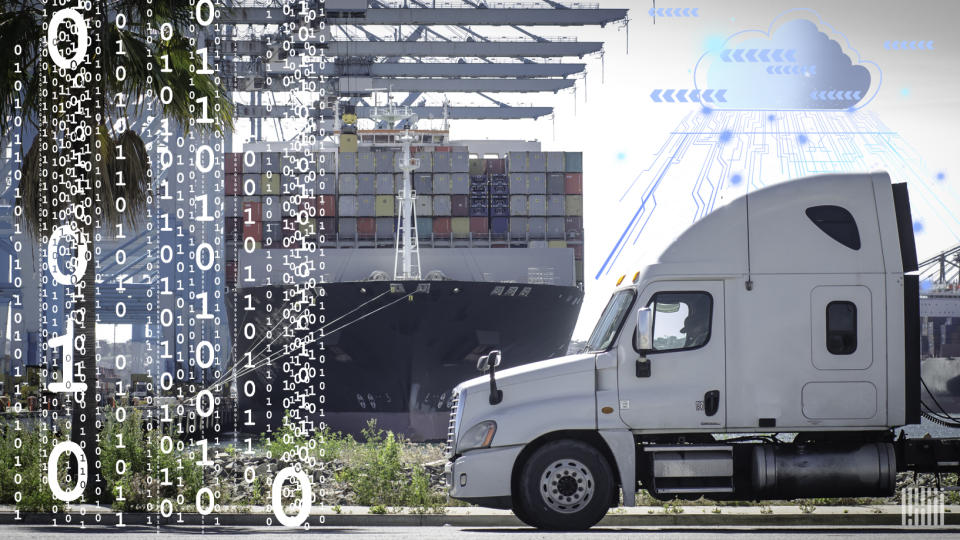Why data standardization is key to streamlined logistics

The views expressed here are solely those of the author and do not necessarily represent the views of FreightWaves or its affiliates.
Recently I wrote about the role of unified supply chain platforms, which enable convergence and help companies navigate the complex global market. The reality is that to streamline the supply chain, it requires not just unification of the technologies used and standardization of process, but also data standardization. Data plays a starring role, providing real-time insights, optimizing operations and ensuring timely deliveries. But without a common language and data definitions, even the most sophisticated data sets can become a chaotic jumble. This is where data standardization comes in, acting as the conductor that ensures everyone is moving in unison.
Data standardization has been more successful in some industries but not in the complex world of logistics.
The International Standard Book Number (ISBN) is a prime example of successful data standardization. It assigns a unique identifier to every book edition, enabling efficient cataloging, ordering and inventory management across publishers, distributors and bookstores. The health care industry has Health Level Seven (HL7), a set of international standards for exchanging information electronically. It enables the exchange of patient medical records, lab results and other vital data among hospitals, clinics, pharmacies and insurance companies. The financial services industry has the International Bank Account Number (IBAN) and Society for Worldwide Interbank Financial Telecommunication (SWIFT), a messaging system for secure financial transactions.
There are specific reasons why the logistics industry faces unique hurdles when it comes to data standardization. Logistics involves a vast network of players, from manufacturers and distributors to logistics providers and retailers as well as customers. Each participant may have its own internal systems and data formats, making standardization a complex undertaking. Logistics often operates across international borders, with varying regulations and data privacy laws. Achieving a globally accepted standard can be challenging. Many logistics companies still rely on legacy IT systems that are not designed to handle standardized data exchange. Upgrading these systems can be expensive and time-consuming. Standardization ultimately requires collaboration and investment from all stakeholders. The benefits may not be immediately apparent to every participant, making it difficult to achieve widespread adoption.
Inconsistency of data can have significant consequences. Imagine a scenario where a box labeled “10 widgets” arrives at a warehouse, but upon inspection, it contains 12. This simple discrepancy, caused by a difference in unit of measurement (boxes versus individual units), can have a ripple effect. Inventory records become inaccurate, deliveries are delayed, and production schedules are thrown into disarray. This is just one example of the problems that arise from data inconsistency in the supply chain.
Inconsistent data formats and definitions make it difficult to gain a clear picture of inventory levels, shipment locations and potential disruptions. Misinterpretations of data can lead to delays in order fulfillment, incorrect product shipments and increased processing times. When different players use different data formats, communication becomes fragmented, hindering collaboration and proactive problem-solving. Data inconsistencies necessitate manual intervention and rework, leading to increased labor costs and missed opportunities for efficiency gains.
Data standardization acts as the force that brings order to the chaos. In warehousing, standards exist for pallet sizes, container dimensions and warehouse layout optimization, promoting efficient space utilization and product handling. For transportation management, standardization in areas like electronic freight tenders, routing guides and shipment status updates are streamlining communication between logistics providers and shippers.
By establishing a set of common definitions, formats and protocols for exchanging information across the supply chain, it can bring further benefits to the logistics industry and enhance supply chains. Standardized data allows for real-time tracking of shipments, inventory levels and potential disruptions across the entire supply chain network. Streamlined data exchange facilitates faster processing, reduces manual intervention and optimizes logistics operations. A common data language fosters better communication and collaboration between stakeholders, enabling proactive problem-solving and improved decision-making. By eliminating data errors and streamlining processes, standardization reduces costs associated with manual intervention and rework. Finally, accurate and timely deliveries, facilitated by efficient logistics, lead to happier customers and improved brand reputation.
But data standardization is not an easy task in logistics. It requires collaboration among industry players, government agencies and technology providers to develop and adopt common data standards. There needs to be a bigger focus on implementing data management platforms that facilitate standardized data exchange, and analysis is essential. But it does not stop there. Employees need training to understand and work with standardized data formats and processes. And finally, as technology evolves and new needs arise, data standards must be continuously reviewed and updated.
In today’s interconnected world, a data-driven approach is essential for a successful supply chain. By embracing data standardization, logistics providers and all stakeholders within the supply chain can unlock a future of seamless communication and optimized operations, as well as a more resilient and efficient ecosystem. And despite all the current challenges around data standardization, progress is being made. We see several industry initiatives that try to drive this standardization. (Examples are GS1, NFDH, ASTN F49 and IATA.) Cloud-based platforms and data management solutions are facilitating easier data exchange and integration between disparate systems. And governments in some regions are implementing regulations that require companies to adopt certain data standards for compliance purposes. The recently approved EU Supply Chain Law (CSDDD) might indirectly promote data standardization by requiring companies to map their supply chains and report on environmental and human rights practices. This could necessitate more structured data collection and potentially lead to a push for standardized formats.
Look for more articles from me every week on FreightWaves.com.

About the author
Bart De Muynck is an industry thought leader with over 30 years of supply chain and logistics experience. He has worked for major international companies, including EY, GE Capital, Penske Logistics and PepsiCo, as well as several tech companies. He also spent eight years as a vice president of research at Gartner and, most recently, served as chief industry officer at project44. He is a member of the Forbes Technology Council and CSCMP’s Executive Inner Circle.
The post Why data standardization is key to streamlined logistics appeared first on FreightWaves.
